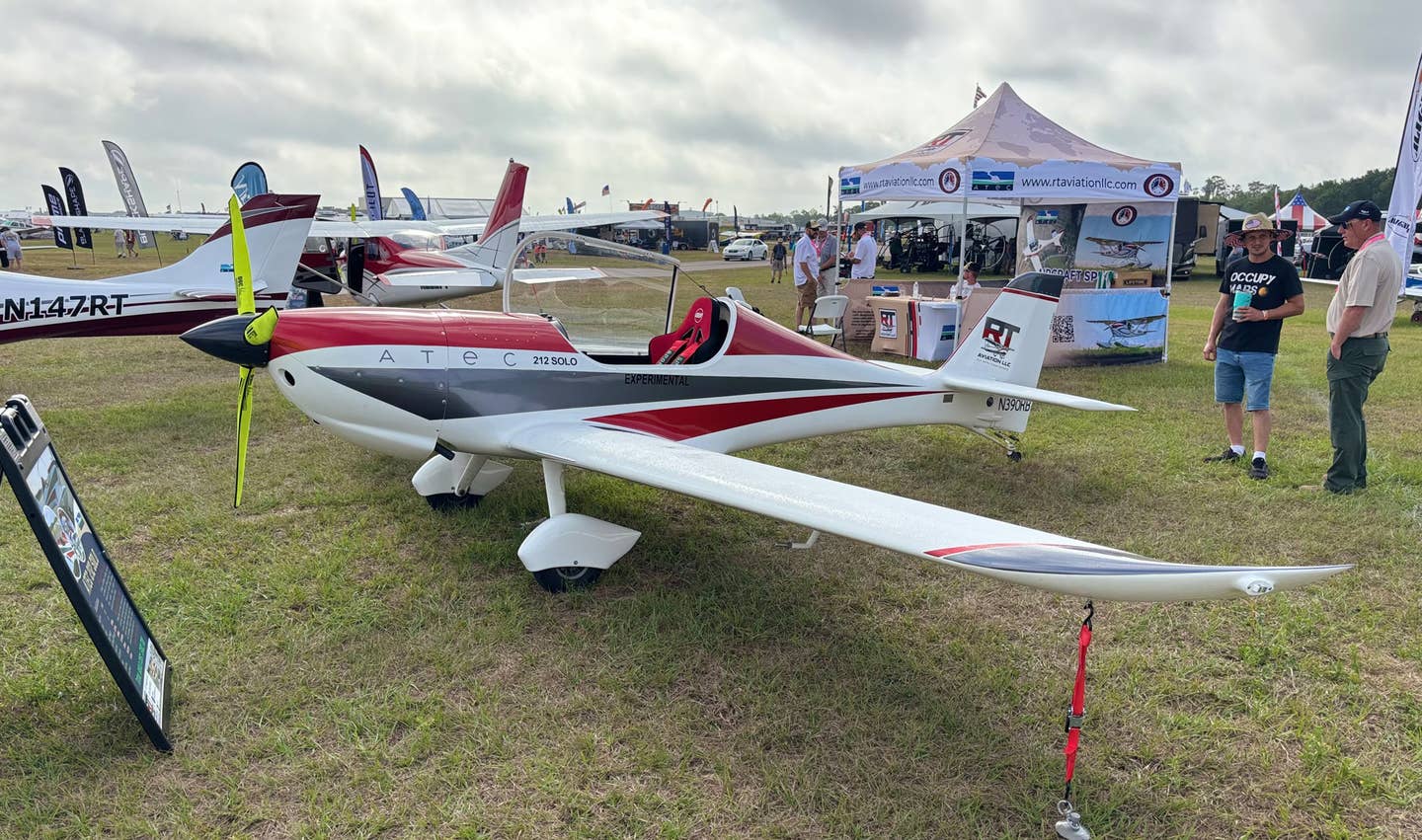Aviation’s Spring Break: It’s Sun ’n Fun to the Rescue
As a major milestone along the march of aviation’s year, central Florida’s Sun ’n Fun Aerospace Expo in Lakeland, Florida, gives cold-weary northerners a much-needed boost from the leftover winter. …

Photo by Jim Koepnick
As a major milestone along the march of aviation's year, central Florida's Sun ’n Fun Aerospace Expo in Lakeland, Florida, gives cold-weary northerners a much-needed boost from the leftover winter.
It’s not that we can’t fly during the short, colder days. It’s just not worth the bother in the frozen states. Bundling up for the trek to the hangar, arranging for some engine heat, wondering if the battery is up to the start, chipping leftover snowplow detritus from the rollout path—naw, too much trouble, wait for a better day.
Floridians, meanwhile, fire up in their shirtsleeves and fly right on through winter. It was 50 years ago that folks in some enterprising EAA chapters thought up the idea of inviting their pale, pasty northern friends down to the lake country in Florida for an end-of-winter get-together. Quickly dubbed Sun’n Fun, the fly-in/airshow took off like, well, spring break with airplanes. This year’s event runs Tuesday, April 9, through Sunday, April 14.
The site at Lakeland Linder International Airport (KLAL) couldn't be a better choice. Nicely situated between the airspaces of the tourist mecca of Orlando and the Gulf Coast's Tampa-St. Petersburg area, the venerable World War II facility, then called Drane Field, has adequate space and easy highway access from Interstate Highway 4's corridor.
Sport and experimental aircraft devotees flock in to mingle with all classes of flight, from balloons to ultralights, antiques to vintage, aerobatic to warbirds, and rotorcraft to seaplanes—you can find it all at Sun ’n Fun.
As with the midsummer extravaganza, EAA AirVenture, in Wisconsin, vendors soon latched on to the Sun ’n Fun explosion, and it became a showplace for products unveiled after winter gestation, with display hangars and booths galore. It's a great place to shop for the latest innovations, or perhaps a fly-market find.
Daily (and sometimes nightly) airshows, constant flybys, lots of food choices, an on-field museum of flight, and educational seminars keep attendees entertained.
Getting in requires perusal of the 27-page NOTAM, available on the event website, which outlines the Lake Parker arrival procedure, which has been modified this year with a entry point on I-4 at Kermit Weeks’ Fantasy of Flight Museum complex (or even earlier), where one begins the 100-knot, 1,200-foot msl trek, heading southward to a racetrack turn point and westward to the north shore of the lake. From there, the interstate leads to another turn at two water towers prior to an interchange onto a 90-degree interception path to the downwind leg for either Runway 10L or 28R, depending on surface winds.
Bear in mind that the 75-foot-wide arrival runway is normally used for a taxiway, and the paralleling main runway is reserved for other activity. As at Oshkosh, colored dots painted on the temporary runway are used as aiming points for separation. There's also the Paradise City grass runway, well south of normal traffic, and Choppertown for the helicopters.
Walking around the grounds guarantees plenty of exercise, although the semicircular flight-line shape appears deceptively short compared to a straight-line layout. There's abundant shade under the Spanish-moss-laden live oaks, under which northerners are advised to seek shelter from the unaccustomed sun. I routinely return from Sun ’n Fun with peeling skin, even with ample protection.

Subscribe to Our Newsletter
Get the latest Plane & Pilot Magazine stories delivered directly to your inbox






